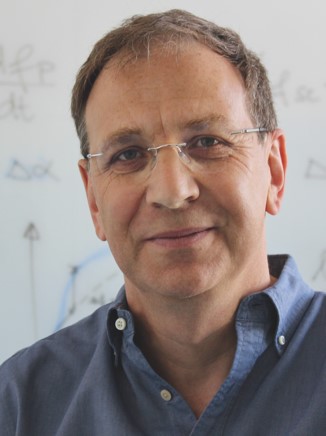Spatial and temporal coordination of RNA translation,
replication and assembly in a membranous plus-strand RNA virus replication factory
Project description – Summary – 3rd funding period
Replication of plus-strand RNA viruses proceeds in cytoplasmic replication organelles (ROs), corresponding to remodeled intracellular membranes to which the viral replicase is attached. During the last funding period, we made important progress in identifying relevant viral and cellular factors in flavivirus (dengue virus, DENV; Zika virus, ZIKV) RO biogenesis and functionality. We identified endoplasmic reticulum (ER) proteins that are essential for flaviviral RO formation, replication and virus particle assembly and established a system supporting DENV RO biogenesis independent from viral replication. Moreover, we deciphered a hitherto unknown function of NS1 in DENV RO formation. Based on these data we established an integrated mathematical model of DENV replication at single-cell resolution and identified a sensitive step in the DENV replication cycle that turned out to be well suited for antiviral therapy.
In the light of the COVID-19 pandemic, we began to study RO biogenesis induced by SARS-CoV-2. By employing multiple imaging approaches, we determined cellular alterations induced by SARS-CoV-2 in infected cells and gained first knowledge on involved viral and host cell factors, revealing striking similarities to hepatitis C virus (HCV) RO formation.
Moreover, we were able to characterize the structure of the SARS-CoV-2 particle, including the structures and distributions of the spike proteins on intact virions.

RO morphology of selected plus-strand RNA viruses. (A, B) Schematic representation of the two different RO morphotypes and the possible link of RNA replication to virion assembly.
(C) Selected examples for ROs visualized by electron tomography in infected cells. Images are taken from Paul and Bartenschlager, 2015, Ann Rev Virol 2:289–310; Welsch et al., 2009, Cell Host Microbe.5(4): 365-75; Cortese M, et al., 2017, Cell Rep.18(9): 2113-2123; Cortese et al., 2020, Cell Host Microbe. 28(6):853-866.
In the next funding period, we want to conduct comparative analyses of viral and host cell factors involved in RO biogenesis and function and aim to decipher the fundamental principles governing the biogenesis of distinct RO morphotypes: invaginations (INV) into the ER as induced by flaviviruses (DENV, ZIKV) and double membrane vesicles (DMVs) as induced by HCV and SARS-CoV-2. Apart from identifying host cell proteins, lipids and pathways involved in ZIKV/DENV- and HCV/SARS-CoV-2-induced RO formation, we want to gain insight into the spatio-temporal coupling of viral RNA replication and virion assembly. Obtained data will be used for modelling of the interplay between host factors, viral proteins and RNA by adapting a mixed-effects modeling framework from population dynamics to time-resolved single-cell data of RO formation and virus replication. Generated models are used to quantify the control exerted by diverse host factors on viral replication.
Project staff


